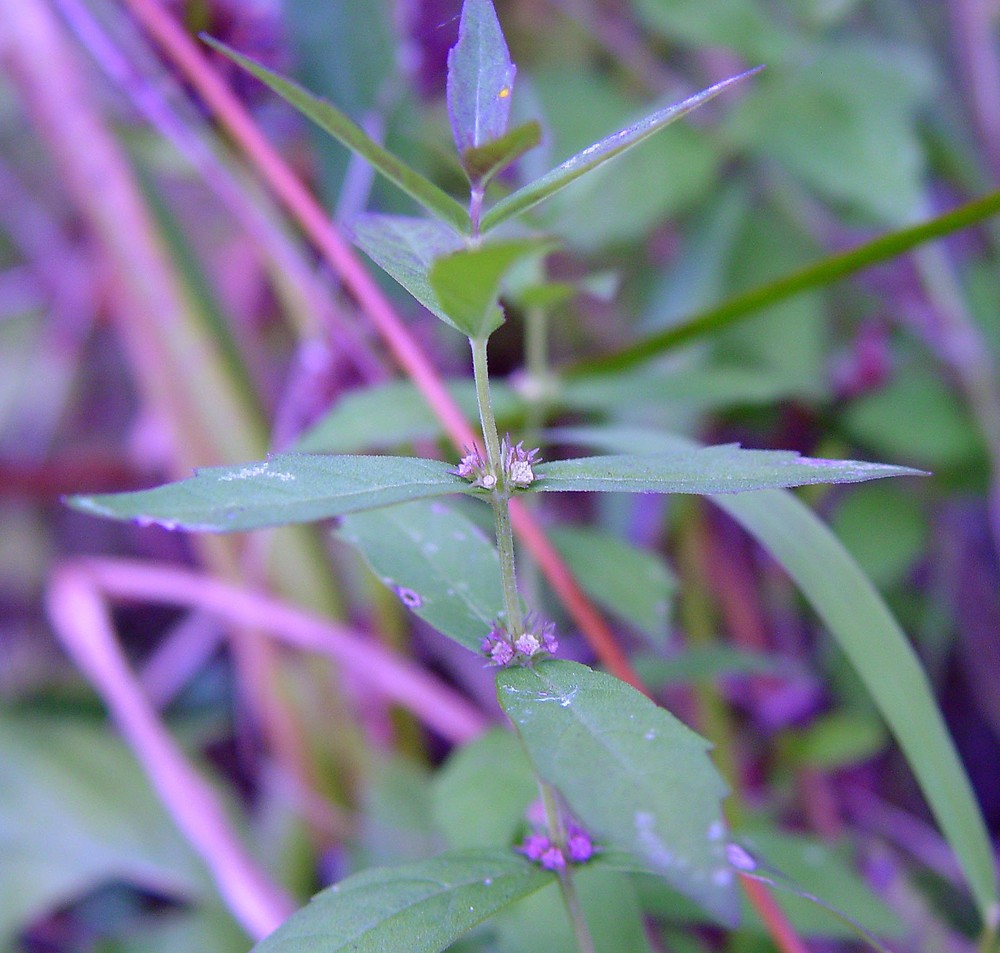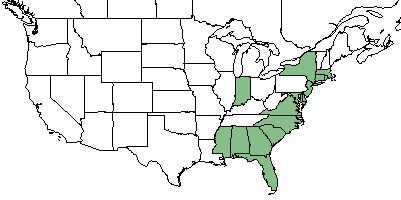Difference between revisions of "Lycopus amplectens"
(→Cultural use) |
|||
| Line 44: | Line 44: | ||
==Cultural use== | ==Cultural use== | ||
| + | The tubers can be pickled and made into relishes or cooked as a root vegetable.<ref> Fernald, et al. 1958. Edible Plants of Eastern North America. Harper and Row Publishers, New York.</ref> | ||
| + | |||
==Photo Gallery== | ==Photo Gallery== | ||
<gallery widths=180px> | <gallery widths=180px> | ||
</gallery> | </gallery> | ||
==References and notes== | ==References and notes== | ||
Revision as of 19:31, 10 June 2021
Common name: Clasping water-horehound[1]
| Lycopus amplectens | |
|---|---|

| |
| Photo by © Arthur Haines, New England Wild Flower Society | |
| Scientific classification | |
| Kingdom: | Plantae |
| Division: | Magnoliophyta - Flowering plants |
| Class: | Magnoliopsida - Dicots |
| Order: | Lamiales |
| Family: | Lamiaceae |
| Genus: | Lycopus |
| Species: | L. amplectens |
| Binomial name | |
| Lycopus amplectens Raf. | |

| |
| Natural range of Lycopus amplectens from USDA NRCS Plants Database. | |
Contents
[hide]Taxonomic Notes
Synonyms: L. pubens Britton; L. sessilifolius A. Gray.[2]
Varieties: none.[2]
Description
L. amplectens is a perennial forb/herb of the Lamiaceae family native to North America.[1]
Distribution
L. amplectens ranges from Massachusetts to northeastern Florida. There are disjunct populations around the Great Lakes and western North Carolina.[2]
Ecology
Habitat
L. amplectens proliferates in clay-based Carolina bays and other moist habitats.[3] Specimens have been colelcted from longleaf pine savanna and sandy loam of open field.[4]
Conservation, cultivation, and restoration
L. amplectens is listed as a special concern species by the Connecticut Department of Environmental Protection, and as endangered by the Indiana Department of Natural Resources Division of Nature Preserves and the Maryland Department of Natural Resources Natural Heritage Program.[1]
Cultural use
The tubers can be pickled and made into relishes or cooked as a root vegetable.[5]
Photo Gallery
References and notes
- ↑ Jump up to: 1.0 1.1 1.2 USDA Plant Database https://plants.usda.gov/core/profile?symbol=LYAM2
- ↑ Jump up to: 2.0 2.1 2.2 Weakley, A.S. 2015. Flora of the southern and mid-atlantic states. Working Draft of 21 May 2015. University of North Carolina at Chapel Hill, Chapel Hill, North Carolina.
- Jump up ↑ Weakley, A. S. (2015). Flora of the Southern and Mid-Atlantic States. Chapel Hill, NC, University of North Carolina Herbarium.
- Jump up ↑ URL: http://herbarium.bio.fsu.edu. Last accessed: June 2018. Collectors: Loran C. Anderson, Bert Pittman, Kathy Boyle. States and counties: Florida (Wakulla) Georgia (Thomas) South Carolina (Lee)
- Jump up ↑ Fernald, et al. 1958. Edible Plants of Eastern North America. Harper and Row Publishers, New York.